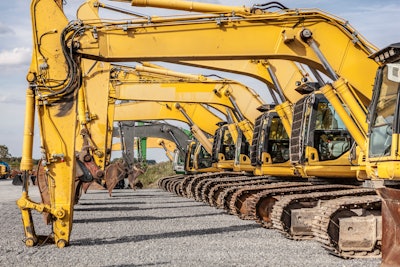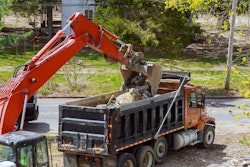
There's a growing trend for plug-and-play telematics solutions. The claim is that self-installation is relatively quick, is super easy and can provide significant cost savings, no matter your industry. How it works is that the company ships the device to you saying that all you need to do is plug the black box into any asset with an OBD-II port and you are off and running.
As an owner or operator, you have millions of dollars invested in your fleet of vehicles, equipment and assets. Proper installation of GPS tracking devices is crucial for the software to work and report accurate fleet data to ensure you see the full benefits of fleet tracking immediately.
These plug-and-play claims raise many questions that construction leaders must consider before moving forward. The most common issues with self-installing devices are:
1. Self-Installation Doesn't Reduce Outside Costs.
It might seem like an in-house maintenance and repair crew could install the devices and that would save money. The reality is that it might take about two hours per asset because they aren't familiar with telematics. That means a huge chunk of their workday has been spent doing something that's not in their job description.
Furthermore, because the installation isn't the highest priority, your team might try to fit it into their schedule, but only when they have time. The result is a more extended installation period and potentially botched installation, which will only create more problems down the road. This also means you can't baseline or measure success when your fleet is only partially installed.
Contrast this with a professional installer. Someone would come in and complete the setup in about an hour. Your hardware and software would be installed properly and effectively. Then, the telematics customer service team would take over and begin the onboarding and training so you could be up and operating promptly.
Additionally, you wouldn't have to worry that you were wasting your team's time with tasks they don't know how to do. With a professional, the work is done for you, and you can ultimately save money in the process.
2. Overlooked Devices Never Get Installed.
With self-installation, there's a project management challenge because no one keeps track of what devices are being installed by location. For instance, if you want to install 20 pieces of hardware in each location and you have 10 different locations, that's already 200 pieces of hardware and a massive potential for devices to be overlooked, lost or misplaced. Furthermore, a huge burden falls on you as the construction leader to implement proper planning and installation practices. When setting up, you'll inevitably have two or more vehicles called out for an emergency visit. Therefore, you must note which vehicles didn't get the installations yet and ensure they still receive the proper hardware or software.
On the flip side, a proper installation done by telematics professionals will have the systems available to keep tabs on all devices, create an effective installation schedule (even across large fleets) and ensure all vehicles receive necessary installations. This means you will not have to create installation plans that might ultimately fall through. By working with a professional, you can leverage their knowledge and expertise to ensure all devices get installed promptly and correctly.
3. One Size Doesn't Fit All.
Every GPS device is the same for just about every vehicle, piece of equipment and asset. That is so not accurate. Plug-and-play devices are usually generic, so you don't know whether they will be compatible with your specific vehicles, equipment or assets. Also, because it's easy to plug in the gadget, the driver can effortlessly remove it if they don't want it there.
Installations can vary by each piece of equipment and vehicle based on year, make, model and tracking device type, so it is essential to have a professional who is familiar with specific installation type hookups for your GPS tracking devices.
4. What You Don't Know Could Cost You.
With a self-install, you don't know what you don't know. You aren't aware of whether the device is working correctly or there's a breakdown. You can't tell whether it's an installation issue, a vehicle-related challenge or the driver tampering with the gadget. This is because you don't have the expertise to troubleshoot these issues.
Having a professional installer and a telematics provider who will work on onboarding, training and ongoing customer support can help you ensure you extract the maximum value from your telematics platform.
Altogether, self-installation can be a messy affair. You'll spend most of your time putting out fires instead of maximizing the data from your telematics solution. Fortunately, once you realize that self-installation isn't the best path, you can work with professional installers to reassess and make corrections on your fleet or work with professionals first to ensure the job gets done right the first time.


















